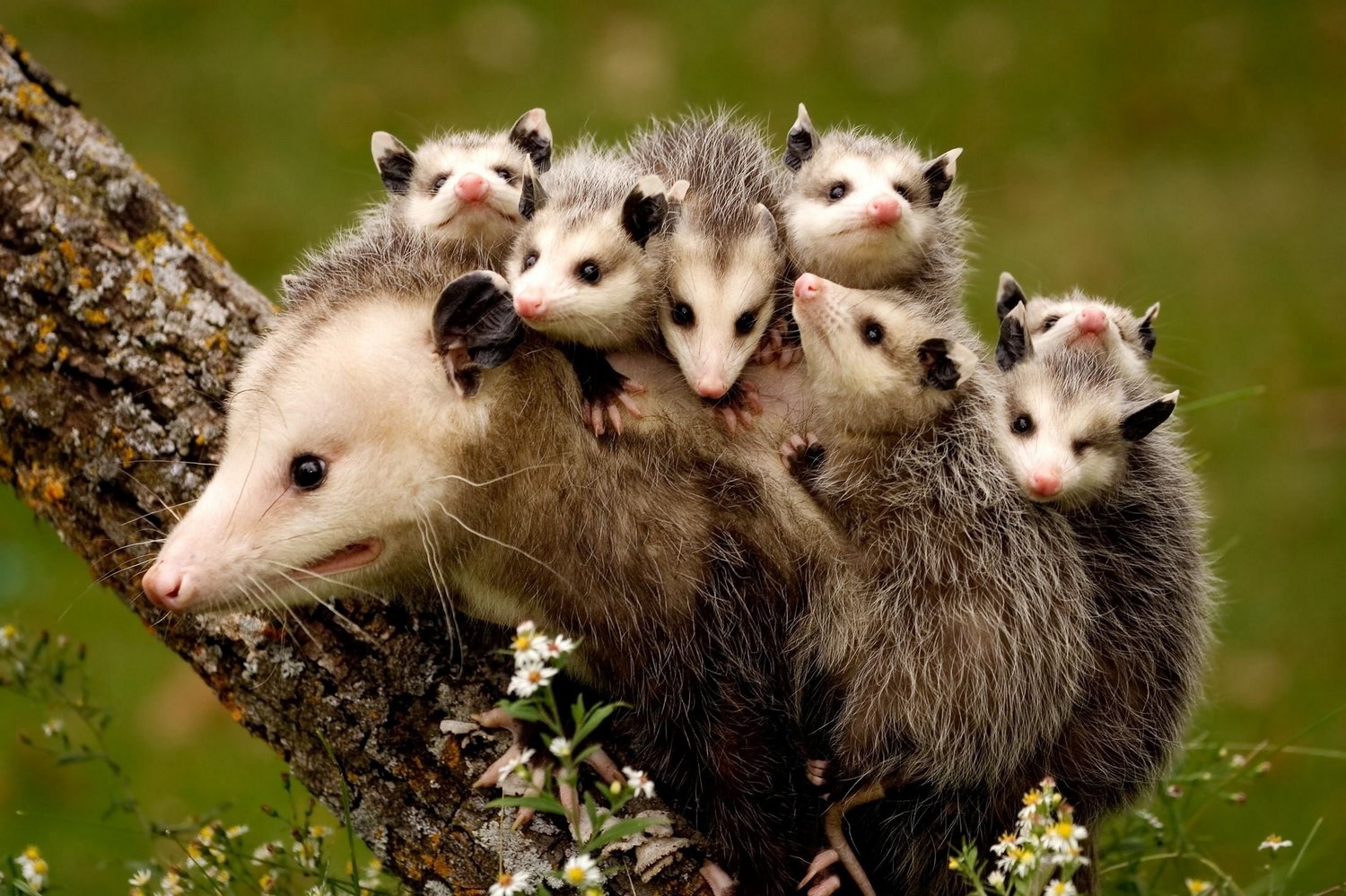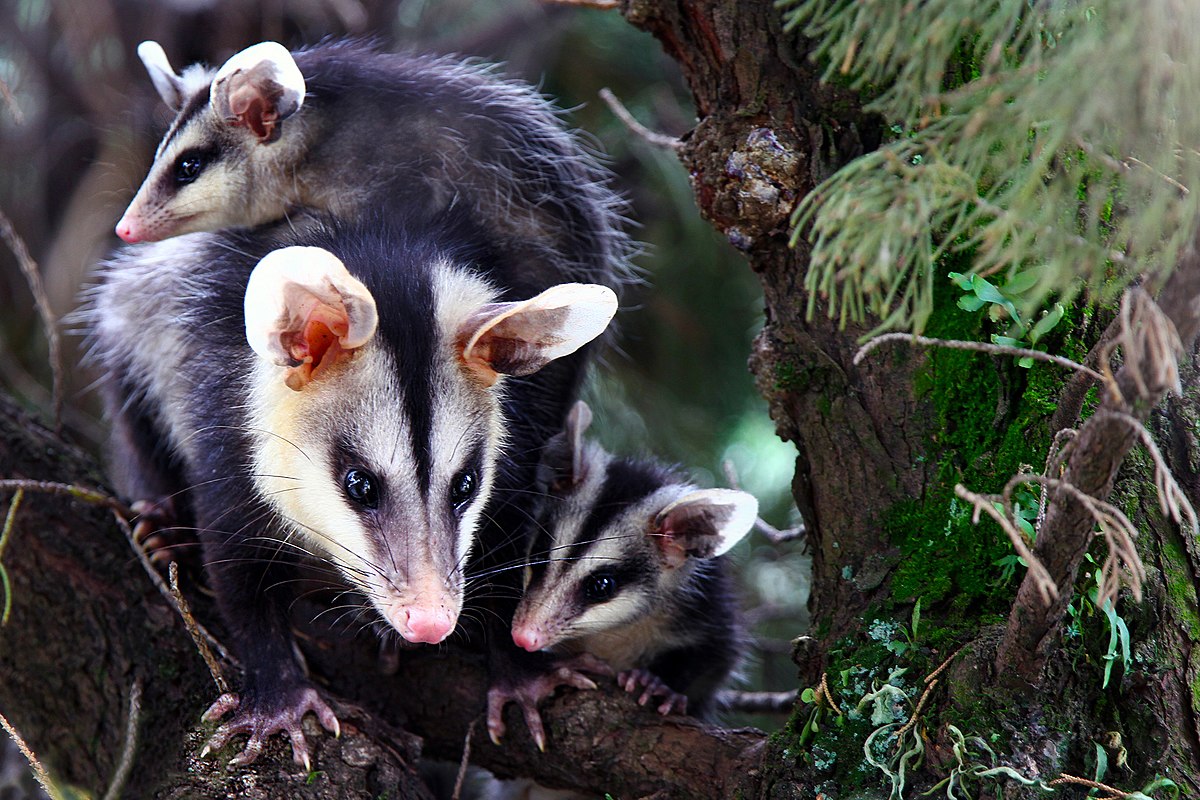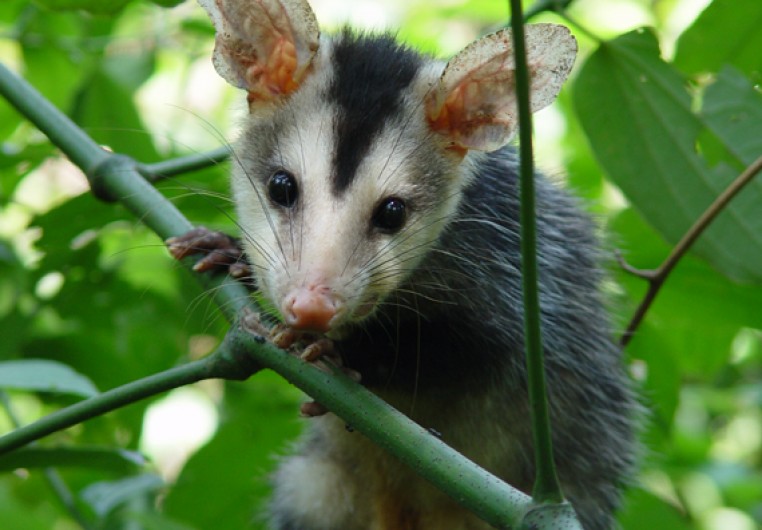
The white-eared opossum (Didelphis albiventris) a.k.a timbu, cassaco, is an opossum species found in Argentina, Bolivia, Brazil, Paraguay, and Uruguay.[3] It is a terrestrial and, sometimes, arboreal animal, and a habitat generalist, living in a wide range of different habitats.[3]
For some time, this species was incorrectly known by the name D. azarae, correctly applied to the big-eared opossum. This led to azarae's discontinuation as a species name.[1] From 1993 until 2002, this species also included the Guianan white-eared opossum (D. imperfecta) and the Andean white-eared opossum (D. pernigra) as subspecies.[1]
It is the team mascot of Clube Náutico Capibaribe, a Brazilian football team from Recife, Pernambuco.[4]
Description

The white-eared opossum is about one to three pounds in weight and has black and grey fur, with white hair covering their ears and face, and dark hair on their long tails. They are omnivorous, feeding on invertebrates, small vertebrates, and fruits.[5]
Distribution and habitat

White-eared opossums inhabit open areas, mountains, and deciduous forests and are commonly found in Argentina, Paraguay, Uruguay, Bolivia, Brazil, the Andes, and humid forests of Guyana, Suriname, and southern Venezuela.[6] These areas have disparate environmental characteristics such as rainfall, humidity, water balance and temperature.[7]
The white-eared opossum often changes its habitat depending on its breeding season. Usually populations are higher in the wetter seasons when the young are weaned and begin venturing out for food.[8] Though normally solitary and nomadic, some will group together in burrows, holes, empty garbage or even under houses.[citation needed]
Diet and seed dispersal

South American opossums mainly consume invertebrates such as beetles, diplopods, and opiliones, together with fruit and vertebrates like small birds, mammals, fossorial snakes, and fish.[9] The composition of the diet changes with the seasons and as the animal ages. During the dry season, older opossums prefer to consume vertebrates.[9] On the other hand, the younger opossums consume more invertebrates and fruits during the wet season.[9] These relatively small differences in diet can favour the survival of younger opossums during the wet season because they avoid competition with older animals.[9]
The diet of white-eared opossums also makes them effective seed dispersers.[9] Younger opossums consume smaller fruits than older opossums, so usually the adult opossums disperse larger seeds. However, proportionally, smaller seeds have more chance to pass through the gut without
Didelphis albiventris
 White-eared opossum range
White-eared opossum range




No comments:
Post a Comment
Note: Only a member of this blog may post a comment.